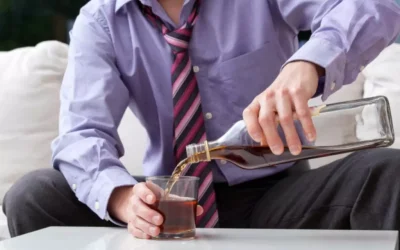Will The Brain Recover After Years of Drug Abuse? SWA Science Articles
This is why people who abuse drugs or alcohol often report feeling flat, sad and lacking motivation and are unable to enjoy activities that they used to find pleasurable. PTSD is a mental health condition that can be triggered by experiencing or seeing a traumatic event, such as a natural disaster, serious accident, or attack. Worldwide, around 3.9% of the general population has PTSD, with symptoms including vivid flashbacks and avoidance behaviors, such as staying away from places or pushing away people that remind them of the traumatic event. Currently, PTSD is often treated through therapy or medications such as anti-depressants, but as many people do not respond effectively, researchers are still looking for different treatments.
- What is clear is that alcohol and cannabis do have some neurotoxic effects and that, at least to some degree, this damage is able to be reversed in a similar way that the brain is able to recover from using other substances.
- The rewiring of neural pathways and the restoration of other brain functions take more time.
- These measures are critically important for alleviating withdrawal symptoms, which can span a wide spectrum of severity, and for treating co-occurring mental health conditions such as depression, anxiety, or bipolar disorder.
The Neuroscience of Addiction Recovery
The good news is that the human nervous system is neuroplastic, meaning it can change for the worse and the better. Brains that have been harmed by substance abuse can unlearn the negative behaviors. The important thing to understand is that addiction recovery is not a magic pill that can make the dependence disappear overnight. Studies have also found that parts of the brain that can potentially stimulate cravings are highly active in drug abusers. These changes explain why people with substance use disorders can relapse during or after addiction treatment.
- Brain functionality connects to all bodily processes, including all physical activity and cravings.
- Addiction significantly disrupts the brain’s natural stability, impacting important areas involved in reward, motivation, learning, judgment, and memory.
- Our brain’s plasticity or flexibility suggests that we can change our behaviors as we learn new skills and develop new habits.
What are some specific strategies or treatments that can help heal the brain after taking antipsychotic medications?
For example, if feelings of sadness make a person want to drink alcohol, then sadness is the stimulus that drives a person to drink. The brain rewiring process teaches the brain to interpret feelings of sadness as something that can be managed by speaking to a loved one or a therapist. So, rewiring the brain is simply retraining the brain to function differently in response to triggers.
Role of Professional Support
The path to brain recovery post-addiction unfolds in several key phases, each marking an important step toward healing. Initially, detoxification clears the body of substances, setting the stage for recovery. Following this, during the early recovery phase, the brain begins its repair process, slowly adjusting to the absence of substances and starting to reestablish normal neural pathways. The final stage, sustained recovery, is where long-term and more profound improvements in brain function are realized.
How to Heal The Brain After Drug Use
In addition to that, you can use other parts of your brain to maintain key functionality while you recover from addiction. One of the main concerns regarding long-term use of antipsychotic medications is the potential for the development of tardive dyskinesia. Tardive dyskinesia is a neurological disorder characterized by involuntary movements of the face, lips, tongue, and other parts of the body. These movements can be bothersome and can significantly impact an individual’s quality of life. Studies have shown that the risk of developing tardive dyskinesia increases with the duration of antipsychotic medication use. However, it’s important to note that not everyone who takes antipsychotics will develop this condition.

Old Behaviors of Use and the Brain
Structural imaging techniques allow one to examine the brain’s physical, anatomical structure. Structural imaging is essentially cross-sectional, in that it provides static information and is analogous to taking a photograph of the brain. These images permit evaluation of overall signs of drug use anatomical abnormalities, including tissue atrophy (i.e., loss of neural tissue) and reduced white matter integrity (i.e., weakened connections between neural structures). At Hanley Center, we provide distinct, effective interventions that help heal the brain on a cellular level.
In some cases, individuals may choose to explore alternative treatments that support brain healing. These can include acupuncture, herbal supplements, and certain types of therapy, such as cognitive-behavioral therapy. It is important to consult with a healthcare professional before pursuing any alternative treatments to ensure safety and effectiveness.

